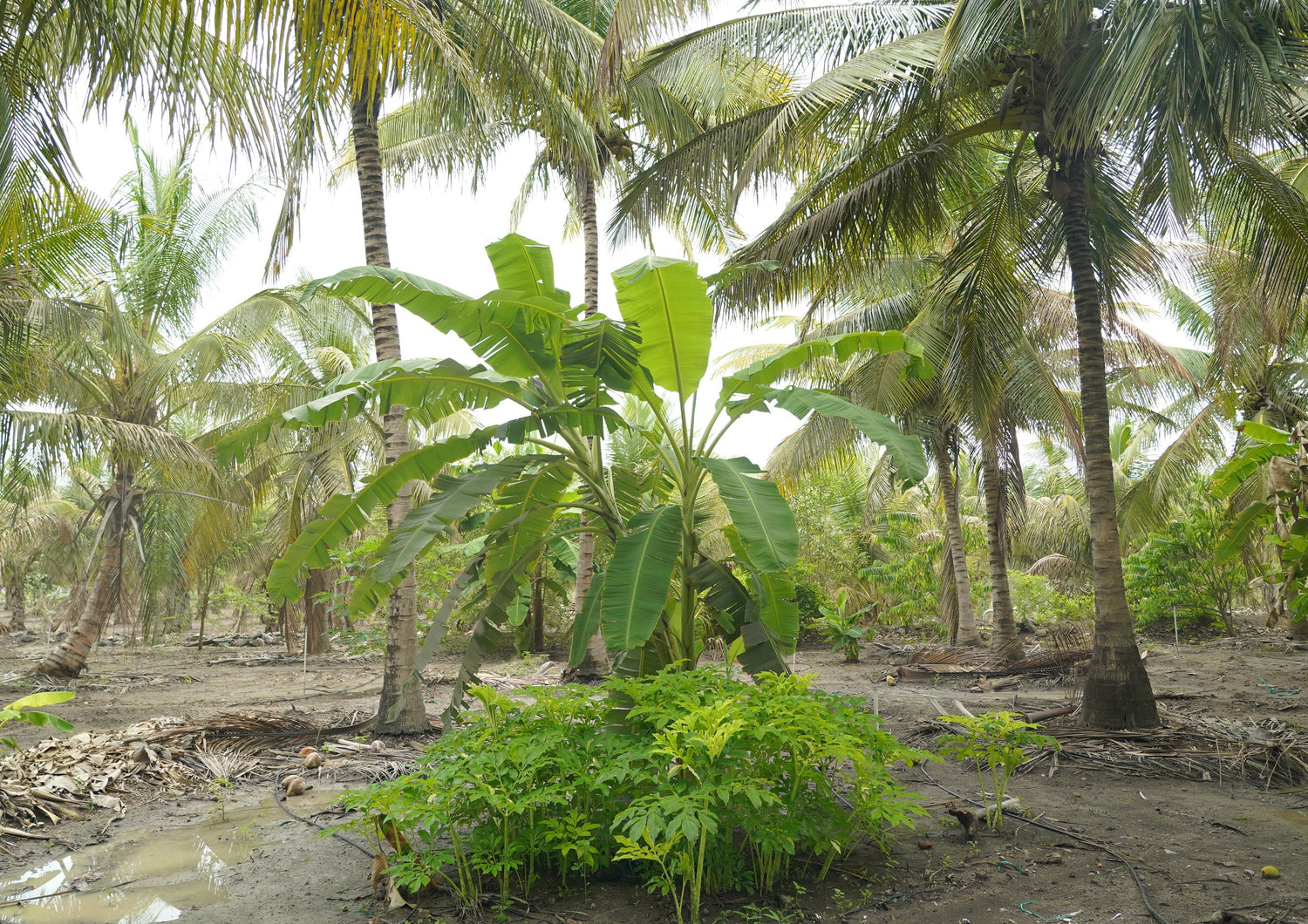This system involves growing crops of varying heights simultaneously on the same piece of land, thereby using land, water, and space more efficiently and economically.
When selecting individual species, the rooting patterns of the crop combinations should also be considered. A detailed study of multi-storeyed crop combinations has identified a four-crop structure: coconut, pepper, cocoa, and pineapple, all under irrigation. The feasibility and success of this multi-storeyed setup depend on the crown habit of coconut palms spaced 7.5 to 8.0 meters apart, which create the ‘top floor’. Pepper vines trained up to 8.0 meters on the coconut trunks form the ‘second floor’. Cocoa, with a branch spread limited to 3.5 meters in height, constitutes the ‘first floor’, while pineapples make up the ‘ground floor’ until the cocoa canopy fully covers the interspace.
Coconut + Cocoa + Banana + Pineapple 
The root systems of these crops were found to be mutually exclusive and did not overlap significantly. Solar energy reaching the area is intercepted up to the ‘ground floor’. Cocoa, being a shade-loving plant, grows well under coconut palms, while pineapples thrive in partial shade. The microclimate such as evaporation, soil temperature, relative humidity, and atmospheric temperature is more favorable for crop production compared to monoculture coconut stands. Planting crops between coconut palms leads to a notable increase in coconut yields, as the root systems do not compete. Thus, this combination of crops is mutually beneficial and enhances the profitability of the overall cropping system.
